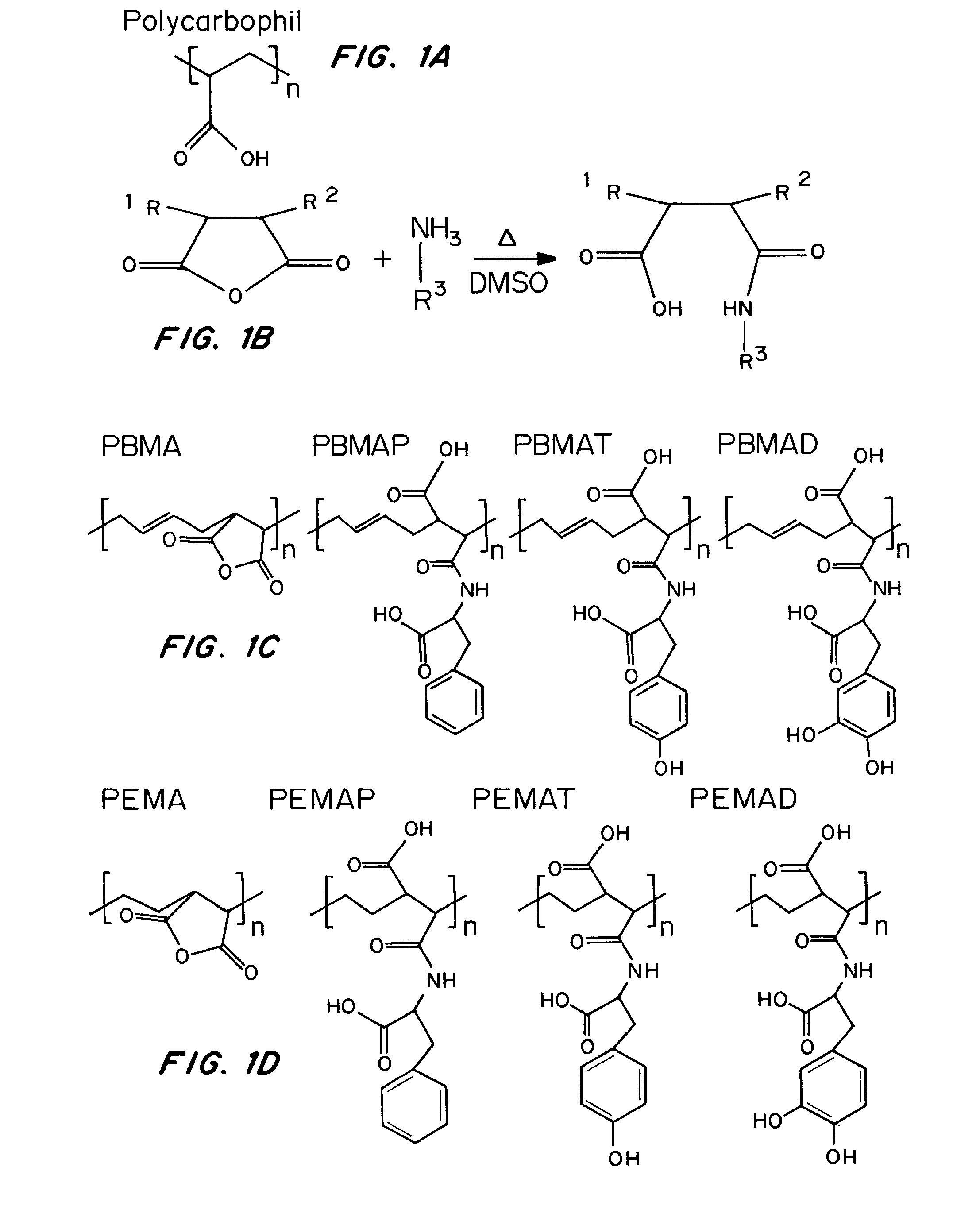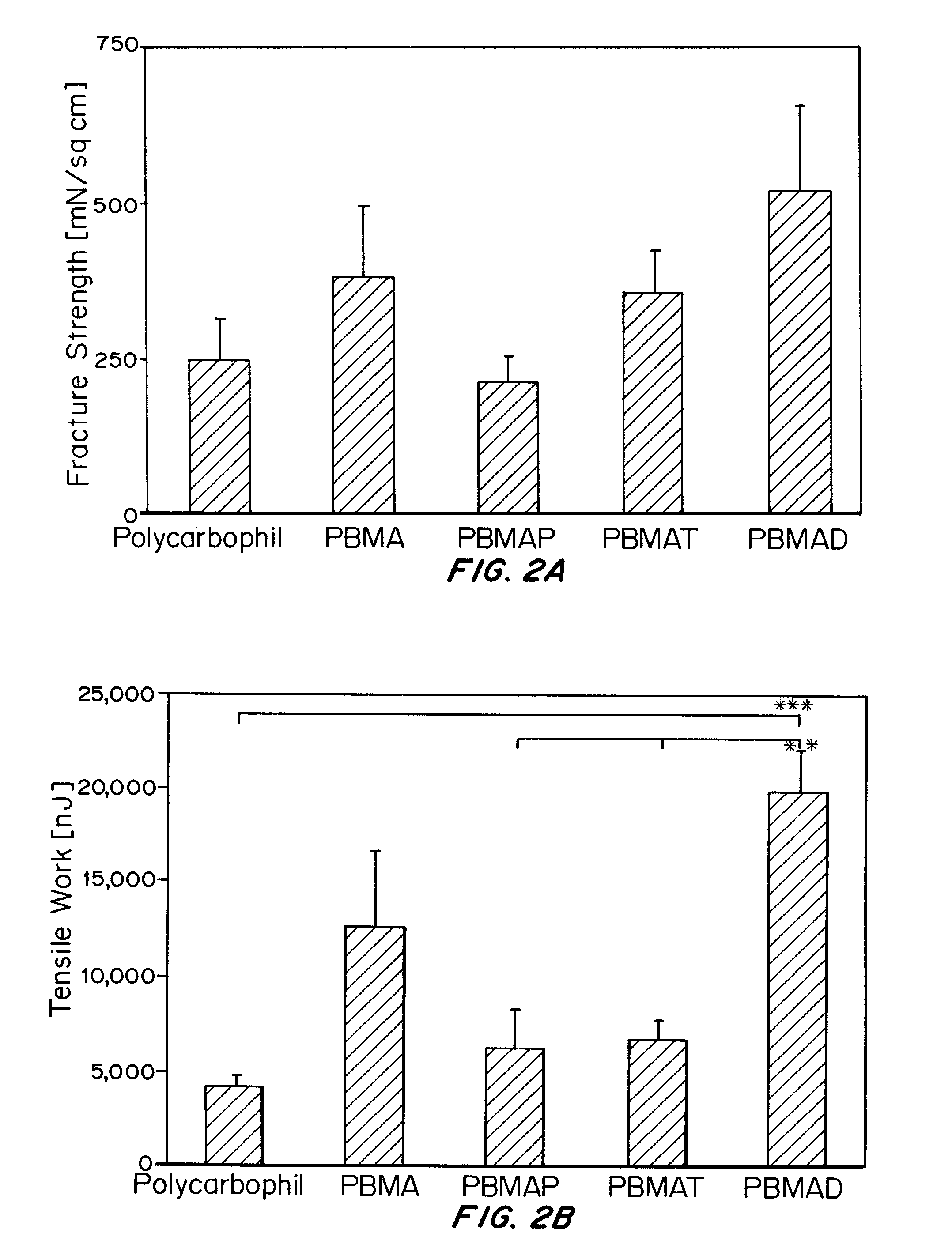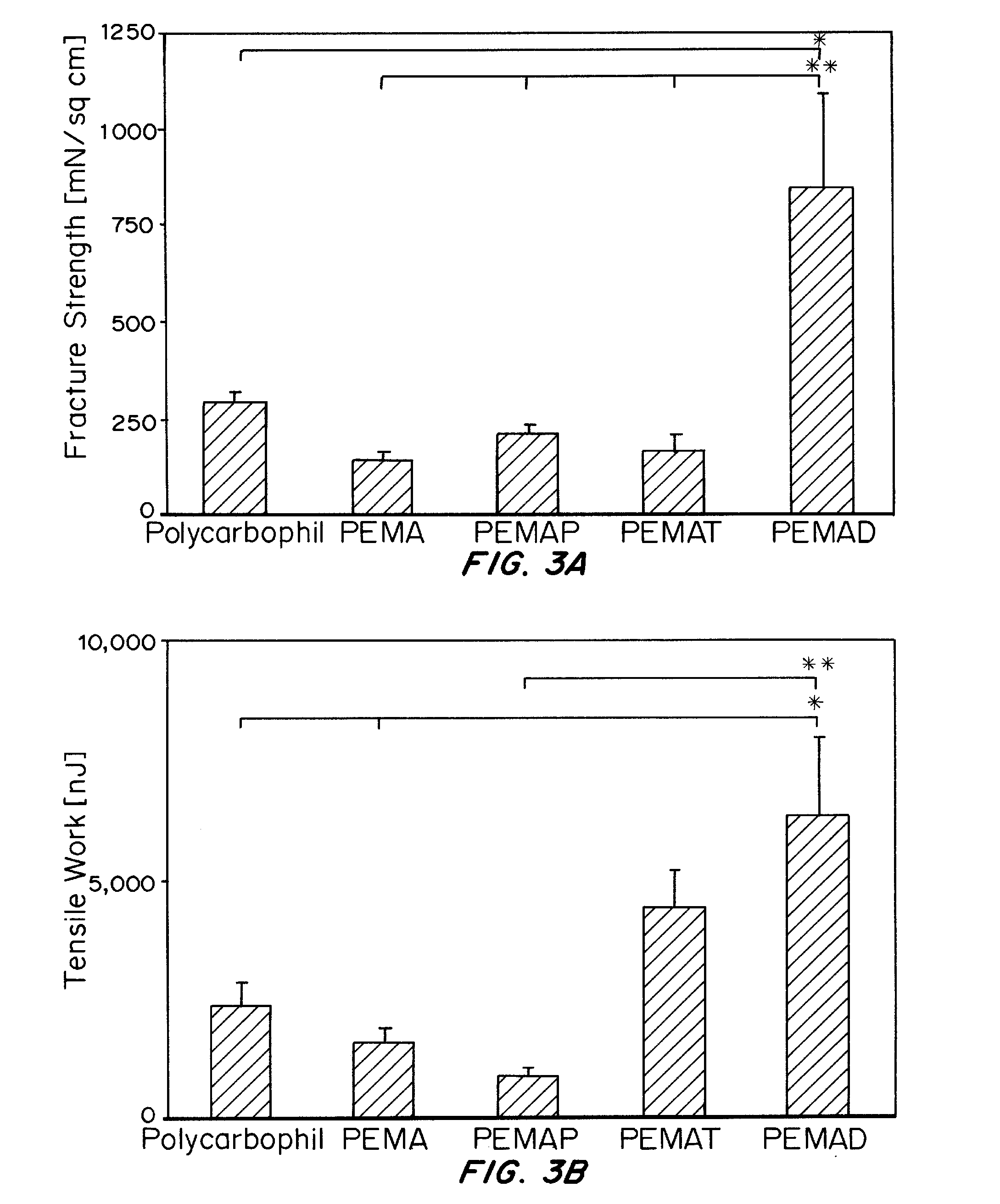Nanoparticle compositions and methods for improved oral delivery of active agents
- Summary
- Abstract
- Description
- Claims
- Application Information
AI Technical Summary
Benefits of technology
Problems solved by technology
Method used
Image
Examples
example 1
Synthesis and Characterization of Bioadhesive Polymers
[0236]Materials
[0237]Poly(lactic-co-glycolic acid) (Resomer RG 502, 50:50; i.v. range 0.16-0.24 dL / g in CHCl3), was purchased from Boehringer-Ingelheim, Inc. (Ridgefield, Conn.), PLGA (75:25; i.v. 0.67 dL / g in CHCl3) and D,L-poly(lactic acid) (D,L-PLA; i.v. 0.21 dL / g in CHCl3) were purchased from Birmingham Polymers, Inc. (Pelham, Ala.); these polymers were stored at −15° C. until use. Poly(methyl methacrylate) (PMMA, atactic; MW: ˜25,000) was obtained from Polysciences, Inc. (Warrington, Pa.) and stored at room temperature. Poly(butadiene-co-maleic anhydride) (PBMA, 15 kDa) and poly(ethylene-co-maleic anhydride) (PEMA, 400 kDa) were purchased from Polysciences, Inc. (Warrington, Pa.), while polycaprolactone (PCL, 65 kDa) and the amino acid conjugates were obtained from Sigma-Aldrich Co. (St. Louis, Mo.). All solvents were of the highest commercial grade available.
[0238]Polymer Synthesis
[0239]All bioadhesive poly(butadiene-co-mal...
example 2
Fabrication of Double-Walled Nanospheres Using Sequential Phase Inversion Nanoencapsulation (sPIN)
[0274]Fabrication of Double-Walled Nanospheres with PMMA-Cores and Varied Shell Polymers
[0275]To fabricate double-walled nanospheres consisting of PMMA-cores with various shell polymers, the appropriate volume of 2% w / v solution of each shell polymer in ethanol was added to a 2% w / v solution of PMMA in tetrahydrofuran (THF) until the cloud point for PMMA was reached. This solution was then rapidly added to a non-solvent bath (petroleum ether) with a solvent to non-solvent ratio of 1:75 and stirred for two minutes to cure the nanospheres. The resulting nanospheres were filtered using a 0.2 micron PTFE filter in a positive pressure filtration column (Millipore, Inc.; Billerica, Mass.) and lyophilized for 24 hours.
[0276]Fabrication of Double-Walled Nanospheres with pBMAD Shells and Varied Core Polymers
[0277]To prepare nanospheres consisting of a pBMAD-shell with various core polymers, the ...
example 3
Synthesis and Characterization of PS, PMMA, and PMMA-BMAD Nanoparticles
[0285]Materials
[0286]Polystyrene (PS) beads (500 nm) were purchased from Polysciences, Inc. (Warrington, Pa.) and stored at 4° C. until use. Suspensions were used as supplied in concentrations of 25 mg / ml. Polymethyl methacrylate (PMMA, MW=100 kDa) and polyvinyl alcohol (MW=25 kDA, 88% hydrolyzed) were purchased from Polysciences, Inc. (Warrington, Pa.) and stored at room temperature. Poly(butadiene maleic anhydride-co-L-dopamine) (PBMAD or BMAD), was provided by Spherics, Inc. (Mansfield, Mass.), and stored at room temperature. All solvents were of the highest commercial grade available.
[0287]Synthesis of PMMA Nanospheres
[0288]Solvent evaporation was used to fabricate monodisperse PMMA nanospheres. PMMA (100 kDa) was dissolved in chloroform at a concentration of 3.3% w / v to comprise the organic phase. An aqueous phase of 1% w / v polyvinyl alcohol (25 kDa, 88% hydrolyzed) was prepared and mixed under a VirTis Cycl...
PUM
| Property | Measurement | Unit |
|---|---|---|
| Fraction | aaaaa | aaaaa |
| Fraction | aaaaa | aaaaa |
| Fraction | aaaaa | aaaaa |
Abstract
Description
Claims
Application Information
 Login to View More
Login to View More - R&D
- Intellectual Property
- Life Sciences
- Materials
- Tech Scout
- Unparalleled Data Quality
- Higher Quality Content
- 60% Fewer Hallucinations
Browse by: Latest US Patents, China's latest patents, Technical Efficacy Thesaurus, Application Domain, Technology Topic, Popular Technical Reports.
© 2025 PatSnap. All rights reserved.Legal|Privacy policy|Modern Slavery Act Transparency Statement|Sitemap|About US| Contact US: help@patsnap.com



